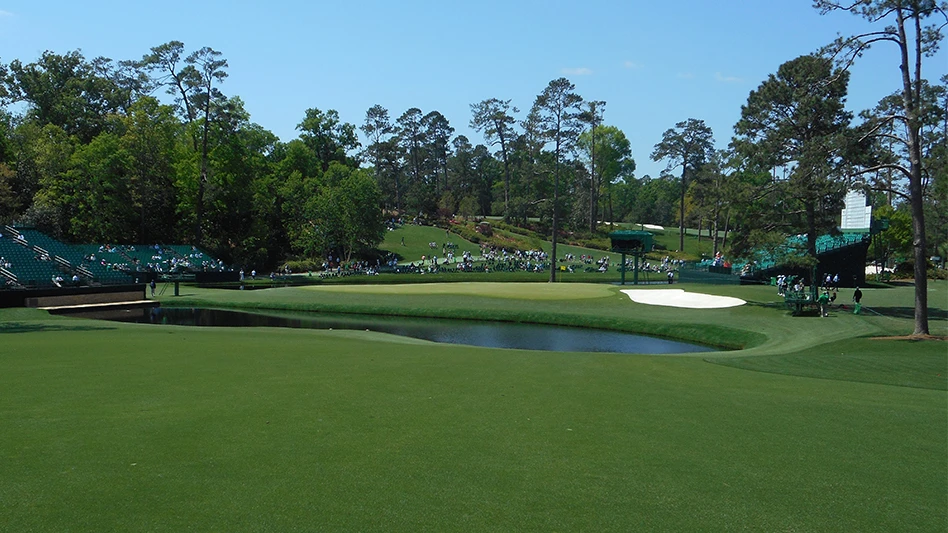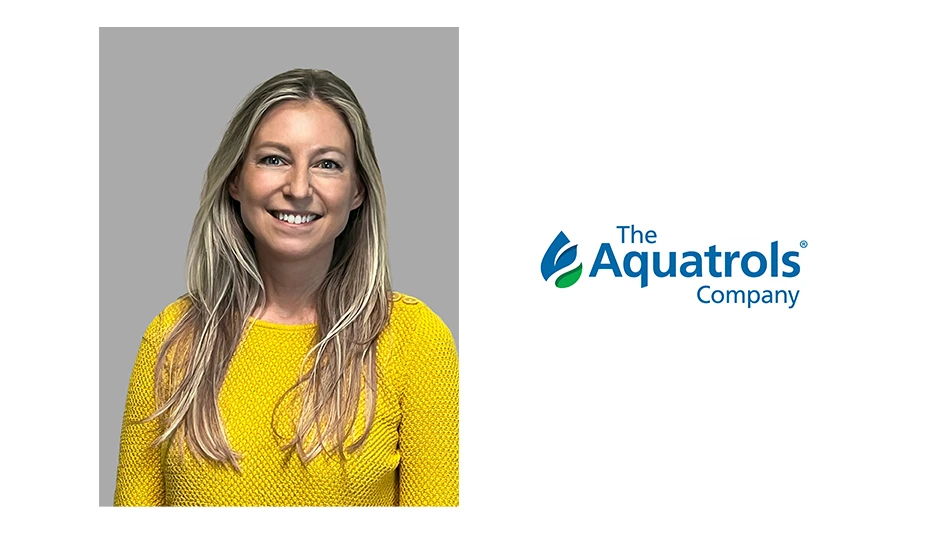
There's a buzz in the air about building, supporting and encouraging the addition of pollinator habitat in areas such as golf courses. This is partly due to a Presidential Memorandum directing the Environmental Protection Agency (EPA) and US Department of Agriculture (USDA) to develop a 92-page "Strategy to Promote the Health of Honey Bees and Other Pollinators," which was released last year. The plan has three "overarching" goals:
- Honey Bees: Reduce honey bee colony losses during winter (overwintering mortality) to no more than 15 percent within 10 years.
- Monarch Butterflies: Increase the Eastern population of the monarch butterfly to 225 million butterflies occupying an area of approximately 15 acres in the overwintering grounds in Mexico, through domestic/international actions and public-private partnerships, by 2020.
- Pollinator Habitat Acreage: Restore or enhance 7 million acres of land for pollinators over the next five years through federal actions and public/private partnerships.
"As an entomologist, one of the primary problems I see is lack of nutritious forage for pollinators," says Dr. David Epstein, senior entomologist with the USDA Office of Pest Management Policy in Washington D.C. "With the President's plan calling for 7 million more acres of land planted for pollinators, golf courses can absolutely become part of the solution." Epstein explains that all federal lands will be evaluated for suitability for pollinator plantings, right down to landscapes surrounding urban office buildings.
Dr. Rufus Isaacs spearheads the Isaacs Lab at Michigan State University. The lab’s focus is on berry crops and pollination ecology, and Isaacs leads the Integrated Crop Pollination project. He shared five steps to establish pollinator habitat that can be easily applied to golf courses anywhere.
1. Make sure you do thorough weed control in advance
There is nothing more discouraging than nurturing a patch of seedlings only to find that half of them turn out to be weeds. Or having Bermudagrass pop up in the middle of a stand of wildflowers that have just started blooming. Proper preparation is a must.
"Areas chosen to be converted to wildflowers, were sprayed with glyphosate, then, once dead, mowed down, raked, and debris removed," says Patty Reedy, superintendent at Los Angeles Country Club. "The areas were then watered regularly, in order to induce weed germination and growth, and then sprayed again with glyphosate."
Some areas will require more treatment with herbicides than others, depending on what was in the area before conversion. "If we are just removing existing shrub material, a light chemical treatment to keep Bermudagrass out is usually all that we do," says Stu Rowland, superintendent at Rancho La Quinta Country Club in La Quinta, Calif.
Stepping back a bit in the process, determining areas for conversion is fairly simple. "We look for areas that will provide an aesthetic view yet do not impact the course of play," Rowland says.
"Areas were determined by choosing spots on the golf course that were out of play but received adequate sunlight to support appropriate germination, growth and retention of establishment," Reedy adds.

Some courses make the choice even easier. For example, Roger Stewart, CGCS, director of golf course management operations at TPC Twin Cities in Blaine, Minn., explains, "this course was built to host tournaments. We had areas that were meant to host galleries of spectators that we converted to native grass areas."
Stepping forward, weed control is a never-ending task. "Although we use no insecticides on those areas, we do spot spray for noxious weeds such as Canadian thistle," Stewart says.
"For us, our biggest (maintenance) concern is keeping the weeds out," Reedy adds. "We have integrated hand pulling of weeds into our regular maintenance schedule in order to reduce and ultimately eliminate herbicide applications in these areas."
2. Select flowering plant species adapted to the type of soil, shade and local region
Don't think a generic bag of wildflower seeds will achieve the results you want. Every region and microclimate should be understood and developed individually. As a matter of fact, planting the wrong seed could actually harm pollinators.
Take for example, Asclepia curassavica, tropical milkweed. It is the only species widely available as seed, and monarch butterflies love it. A bit too much, in fact. Since the plant doesn't die off in the winter in warmer states, monarchs who become accustomed to it cease their annual migration to Mexico all together. In essence, they are "trapping the butterflies," says Lincoln Brower, monarch biologist at Sweet Briar College in Virginia.
Although that might not be too alarming, the plant also hosts a debilitating parasite that results in a shorter life for the butterfly. The lesson here? Plant only native milkweed (see www.xerces.org/milkweed-seed-finder for more information).

"We go to school for turf," says Matt Ceplo, CGCS, superintendent at Rockland Country Club in Sparkill, N.Y. The club's rural, idyllic setting about an hour from New York City make it a perfect getaway for harried Manhattanites looking for a quick getaway. "It's hard to know where to start, but the Audubon program is a great way to go," Ceplo adds.
The Audubon Cooperative Sanctuary Program for golf courses has been a means for many courses to address environmental issues. Courses can become certified sanctuaries and Audubon International offers a comprehensive support program (see www.auuboninternational.org for more information).
Another good source of information is your local seed supplier. For example, Stover Seed, based in Los Angeles, has offered custom wildflower blends for golf courses and other large areas for several years.
"Google has become my best friend when it comes to plants," Ceplo says. "When we started about 15 years ago, Audubon International was about the only place to get information. Now it's at our fingertips."
Ceplo started encouraging native areas on his course for only one reason: to save money. "Everyone mowed everything," he says. "We started with the wooded areas and just left them alone. They were really well received, and were honestly quite beautiful."
Within a couple years, native milkweed moved in and colonized the areas. Ceplo found a few caterpillars and put them in the ladies' locker room. "I figured if the ladies liked the caterpillars, everyone would like them." And like them they did. "It opened my eyes tremendously," he adds.
3. Be patient.
Perennial plantings can take three years before they start to look great. "Adding some annuals to give color in years one and two is a good idea," Isaacs says.
The first year, germination was sparse and wildflower stands were not that strong, Reedy says. "As years progressed, we became more knowledgeable about timing of seed, seeding rates, watering needs and weed management. Plus, over the years, the seedbed began to build and germination increased, as did diversity of species."
While not strictly native plants, Rowland's choice of African daisies resulted in almost immediate great results. "The first year and every year they are beautiful," he says. "Our members absolutely love the spring season when they are all flowering."
4. Manage expectations
"Engage your clientele," Isaacs says. "A sign saying 'Bee Habitat Under Construction' can go a long way to build awareness and interest while the plantings get going."
With all the new awareness about the importance of pollinators in the news, even the most conservative clubs will have a few members who might want to take up the environmental challenge.

"Our members have definitely become more aware of environmental issues and impacts such as water use, especially due to the drought and watering restrictions," Reedy says. "This program of naturalizing areas on the golf course provides a unique way to open up conversation about the golf course that has nothing to do with golf and is more geared toward environmental stewardship."
"Environmental issues are not high on their list when they come to the club," Stewart says. "But they realize that we manage things in a responsible way — because we tell them about it. But I think if we weren't concerned about the environment, we would be conspicuous in their eyes for not doing anything. It's not discussed openly, but comments I hear let me know they are very appreciative of our stewardship efforts."
"I like talking butterflies much more so than bees," Ceplo adds. "Bees are better pollinators by far, but talking butterflies has a much more calming effect. People want a garden for butterflies. If you talk about a garden for bees, all they can think of is getting stung."
5. Work with local conservation groups
You can find advocates in local organizations who know how to establish this type of planting, Isaacs says. "They can help with what species to use and other local issues and can be good advocates for your program once it's established," he adds.
"Honestly, I feel we got so lucky," Ceplo says. "When we got involved with Audubon International, it led to a group called North American Birdwatch, which brought some of the best birders in the region here. One of them found the first purple martins found in our county in 70 years. You start thinking, 'This stuff is working.'"
Stewart estimates that about 70 to 80 of TPC Twin Cities’ 290 acres is native areas. If golf courses across the nation could convert a similar percentage of space to pollinator plantings, the impact would be substantial.
With beekeepers losing 40 percent of honey bee colonies last season and 90 percent of the monarchs' habitat lost in Mexico, it's no surprise that pollinators are in trouble. The good news is that golf courses throughout the nation can contribute to keeping our system in balance.
"We have the land, expertise and the money to back us up," Ceplo says. "Create a wildlife inventory; go to your members and ask them for help. Find your watershed and the organizations that help protect it. There's more support than you think."

Explore the September 2016 Issue
Check out more from this issue and find your next story to read.
Latest from Golf Course Industry
- Smart Greens Episode 1: Welcome to the digital agronomy era
- PBI-Gordon promotes Jeff Marvin
- USGA investing $1 million into Western Pennsylvania public golf
- KemperSports taps new strategy EVP
- Audubon International marks Earth Day in growth mode
- Editor’s notebook: Do your part
- Greens with Envy 66: A Southern spring road trip
- GCSAA’s Rounds 4 Research auction begins





